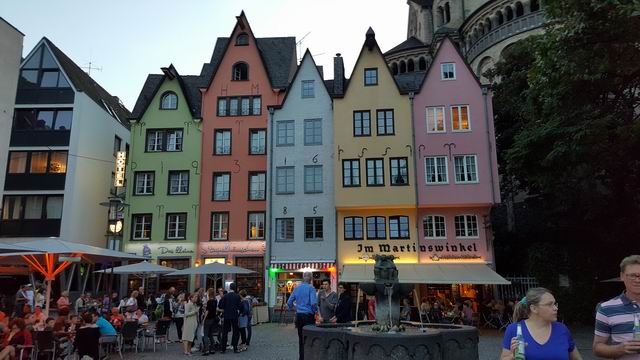

Cologne is a city with much history. Founded by the Romans, the city had its apogee in Medieval times when Charlemagne made it one one of his residences. The Hanseatic League brought the city further prosperity and importance from 1475 onwards. During the 19th century, downfall began. Conflicts and the ruling of Prussia made it lose its independence, with the final blow during WW II, when Cologne was a military headquarter and as such a major destination for the allied bombers. Even after the war, Cologne was surpassed by the choosing of Dusseldorf as head of the newly formed federal state of North-Rhine Westphalia. Nevertheless, Cologne is a vibrant, modern city with, still, the largest cathedral in Germany.It has fascinating bridges over the Rhine-river, some nicely rebuild monumental buildings, and some surprisingly cosy squares.
 |
||
 |
--------------------------
Cathedral of Cologne
---------------------------
Railway station and its lively square
 |
||
further reading::
Peter Fuchs, Köln - damals gestern heute, Published by Greven Verlag, Köln, ISBN 9783774304734. Older book (1956) in black and white, a glance on how the city has changed by the war.
http://www.koeln.de/ . Website from the municipality of Cologne. Contrary to websites of other cities, this is not in English. Worth to take a look before a visit, however.